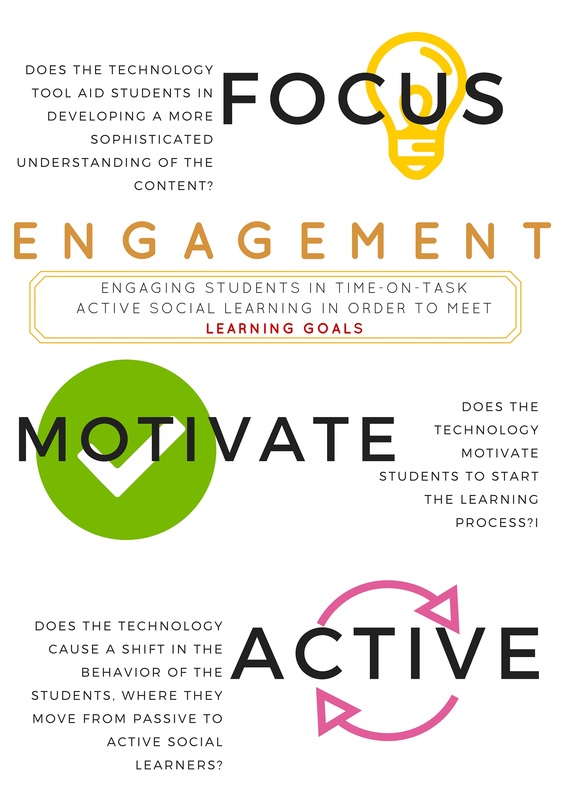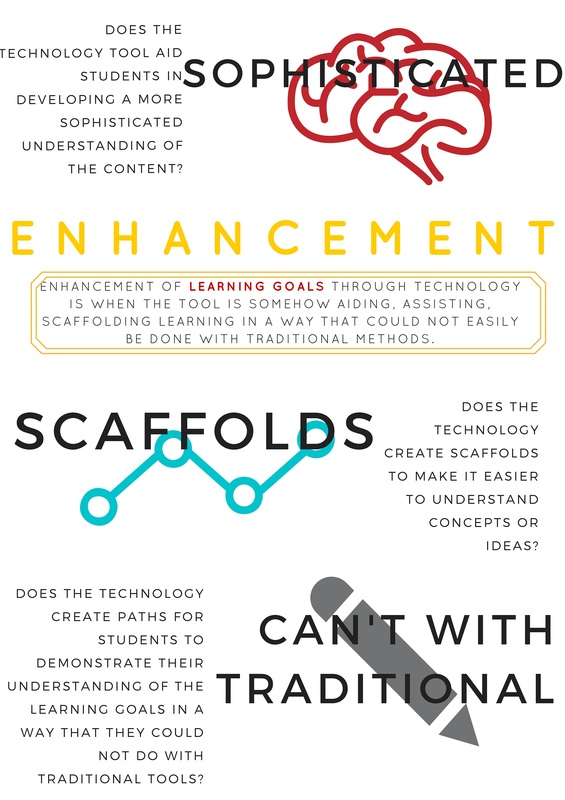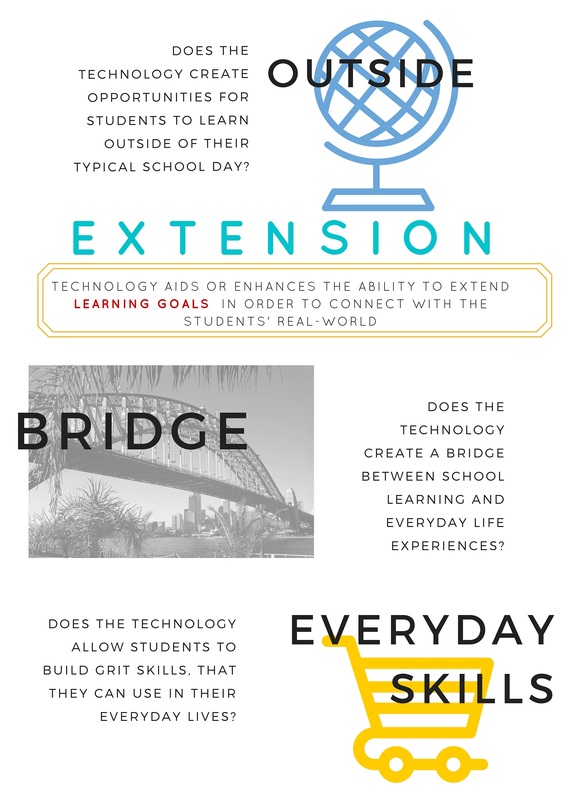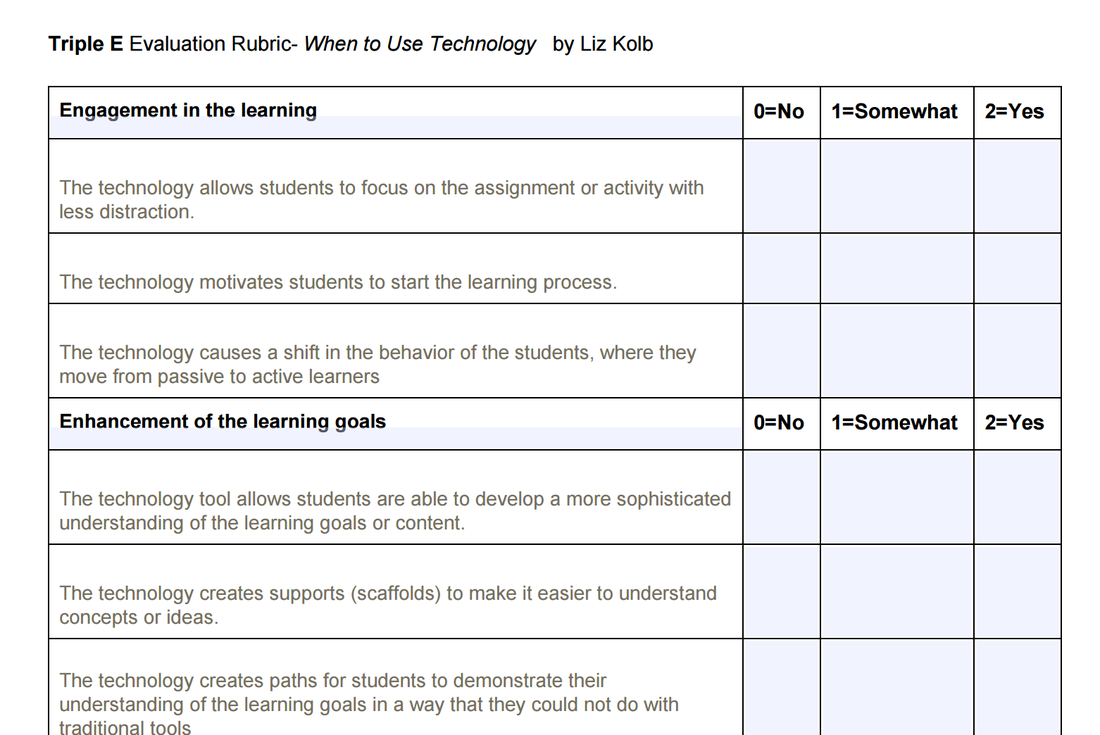EDU 807 Spring 2018 - Week 2 - Triple E Framework Group 3
0 General Document comments
0 Sentence and Paragraph comments
0 Image and Video comments
Triple E Framework
About the Triple E Framework
Created by Dr. Liz Kolb, University of Michigan
http://www.tripleeframework.com/
|
What is the Triple E? The Triple E Framework attempts to define what it should look like, sound like and feel like to integrate technology tools into teaching in order to meet and exceed learning goals. The framework is based on three levels, Engagement in learning goals, Enhancementof learning goals, and Extension of learning goals. While these terms are often used interchangeably, they are distinct and different. The Triple E Framework defines each term and show examples of what makes each one unique and measurable.
The Triple E Framework is based on a considerable amount of research about what works and does not work when it comes to technology in learning. In particular it emphasizes... 


Jan 19
I thought this whole section from paragraph 12-22 rather than calling these areas of emphasis really is reiterating, or developing if you will a list of principles for the effective application of technology in learning. These principles are the basis of what they have come to value (the three E’s) and use as criteria to judge the effectiveness of the application of technology to teaching. It’s very interesting, they could have written this much like the Agile Manifesto and said we value Extension, Enhancement, and Engagement and the principles that underlie these values are para 12-22. 
Jan 22
I agree with you Jeff, these are good criteria to determine the effectiveness of applying technology to learning. This would be a good topic or checklist for a professional development session.
Read more about the research and links here
The Triple E Framework was developed in 2011 by Professor Liz Kolb at the University of Michigan, School of Education. The Triple E was created to fill a gap that has been pervasive in educational technologies---How to effectively integrate technology tools in K-12 learning so they have a positive impact on student achievement and learning outcomes.
WHY Triple E? The research on technology and learning over the past decade is fairly clear, technology should be integrated based on what we already know about good teaching and pedagogical practices. Dating back to the late 19th century, the foundation of current teaching practices is based on the work of pragmatism. Pragmatists like John Dewey (1897) pushed for learning to be embedded in the student's authentic everyday lives, socially constructed knowledge, active/hands-on learning and full of choice. Since the early 1990s Research has found that educational technology with a "drill and practice" approach often has no effects on learning or cognition. Yet, most technology tools created for education are still drill and practice and in the lower-order of Blooms Taxonomy. 


Jan 19
This is an interesting paragraph and I find the concept of authentic learning combined with technolgy and problem based learning to be very interesting and IMHO possibly a great way to effectively incorporate technology. PBL may be advanced for K-12, I am not in that field but conceptually I think this is a good mix to gain the most with technology.
Despite media often claiming a new piece of technology as a way to "revolutionize" learning, that is almost never the case. The Triple E framework takes this fallacy of technology as the magic bullet learning into account, and allows teachers to become critical consumers of making mindful choices around technology tools in their teaching. It is a simple framework, based on research, that helps educators create lessons that allow students to use technology to meet and add value to learning goals as active, social, creative learners, in authentic ways.
How Triple E is Different than other Tech Integration Models 

No paragraph-level conversations.
Start one.



Jan 16
Robert Norman
Robert Norman
:
What does this framework for using technology in education assume about teachers and teaching?
more
I actually like this assumption, that 21st century educators are less likely to assume that the technology is going to go into full AI mode and teach the class for us or perform miracles. This reminds me of the Clark vs. Kozma debate we returned to several times in EDU800: the question of whether technology actually impacts learning or not. This assumption seems to fall into the Clark camp, which is that media doesn’t actually influence learning directly. 
Jan 16
Very curious to hear more of your thinking on this. Did Clark argue that media didn’t influence learning directly, or that it didn’t influence learning at all? I’ve got to get my hands on that article from Mike! At any rate, I’m curious because I think that the way we talk about the hardware/device/tool – as well as the content/media – matters a great deal. Devices, offer my perspective, only offer us opportunities to engage in different types of media. Whether we are passive consumers, semi-active consumers, or producers makes a big difference in what happens for learning. Just curious to hear more of your thoughts on that. 
Jan 17
Here is a quote from the article we read: My early articles (Clark, 1983, 1985a) claimed, in part, that media are “mere vehicles that deliver instruction but do not influence student achievement any more than the truck that delivers our groceries causes changes in our nutrition” (1983, p. 445) Clark, R. E. (1983). Media will never influence learning. Educational Technology Research and Development, 42(2), 21-29. 
Jan 19
I thought this paragraph to be important in this concept and one that I largely agree with. Technology is a “Tool”. I find myself remaining in the Clark camp. I find technology to be just medium or media to deliver content. Technology impacts learning when it is integrated into a learning environment through appropriate application of learning theories, instructional strategies and instructional design. So, if you applied a Constructivist approach (theory) with Authentic Learning Strategies and PBL Strategies into a course design for a Blended Learning, Civil Engineering: Road Construction class, the technology doesn’t teach it just facilitates the learning because integrated correctly groups can work on problems together, their are multiple methods for providing feedback etc. Technology greatly enhances the capability to deliver learning but doesn’t change learning (My next statement will be the most controversial largely because the wording will be imprecise) because, Learning is something that happens within an individual. The mechanism of delivery be it a lecture or a webinar is just a delivery mechanism.
Triple E Level 1: Engaged Learning
|
General Document Comments 0





For this week, please look for a segment in each text where you can reply to the following:
What does this framework for using technology in education assume about teachers and teaching?
What does this framework for using technology in education assume about students and learning?
Please offer at least one comment related to the assumptions about teaching, as well as at least one comment on each document related to the assumptions about learning (2 initial comments). Then, please reply to at least two different classmates on one of their comments (2 responses).

I din’t see the rules for engagement until the end. Apparently we all pushed your comments to the bottom. IN the future I will look for this first.

this can be awesome plus meanful. this can be interesting site. Leading is rather handy element. you may have seriously made it simpler for many people who seem to take a look at site and give these folks usefull information and facts.NAPSRX scam https://cnprreviews33.tumblr.com/











0 archived comments